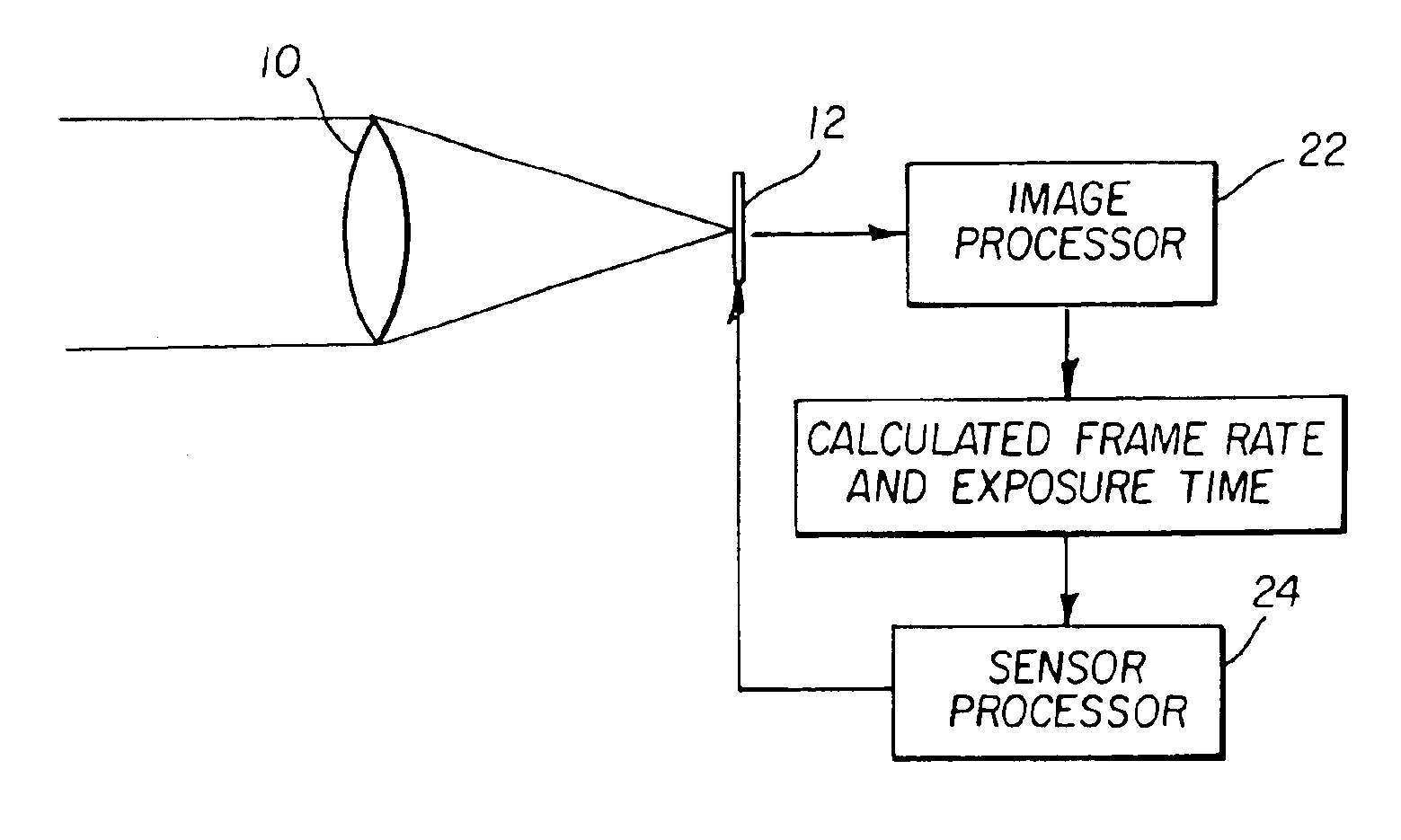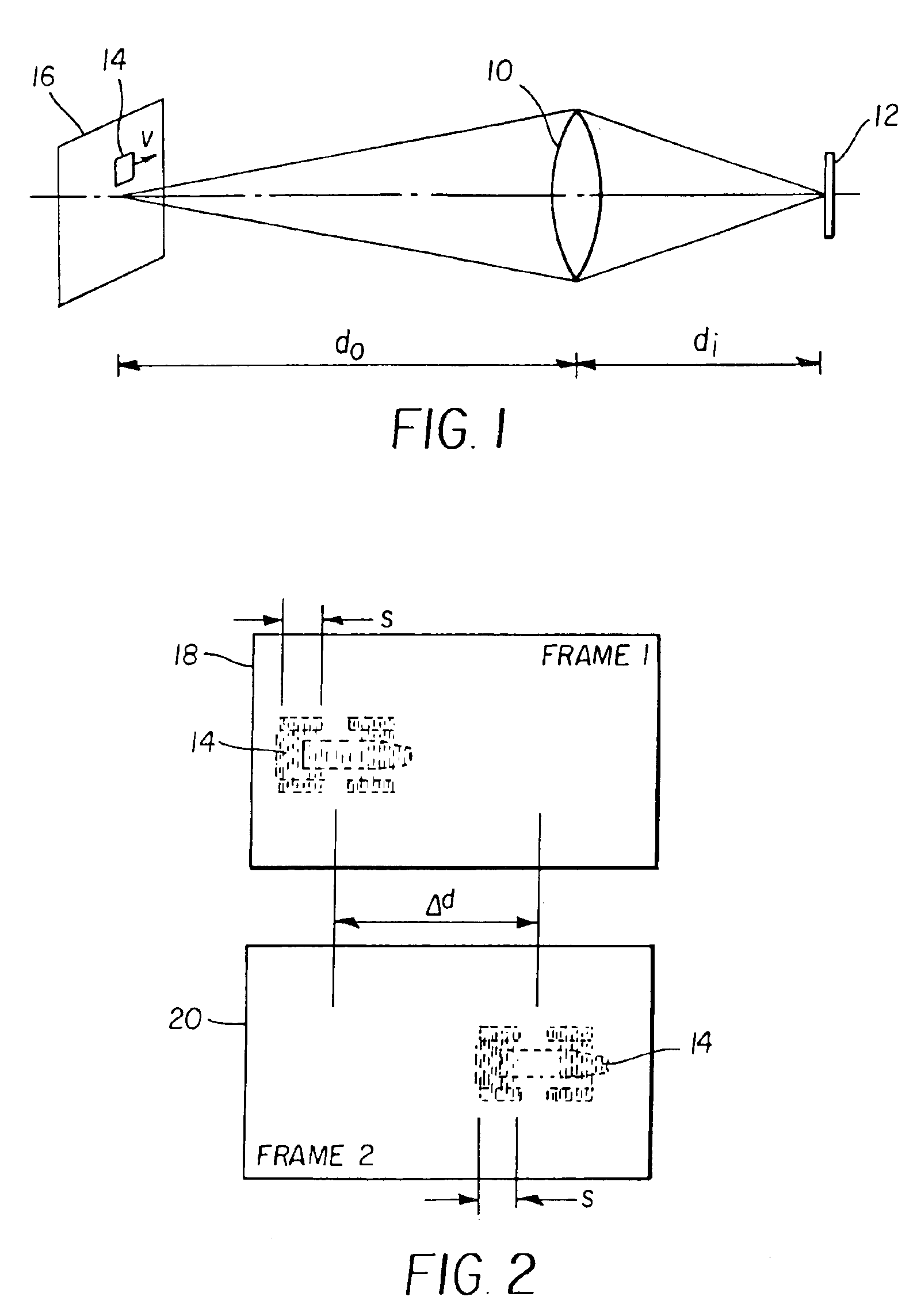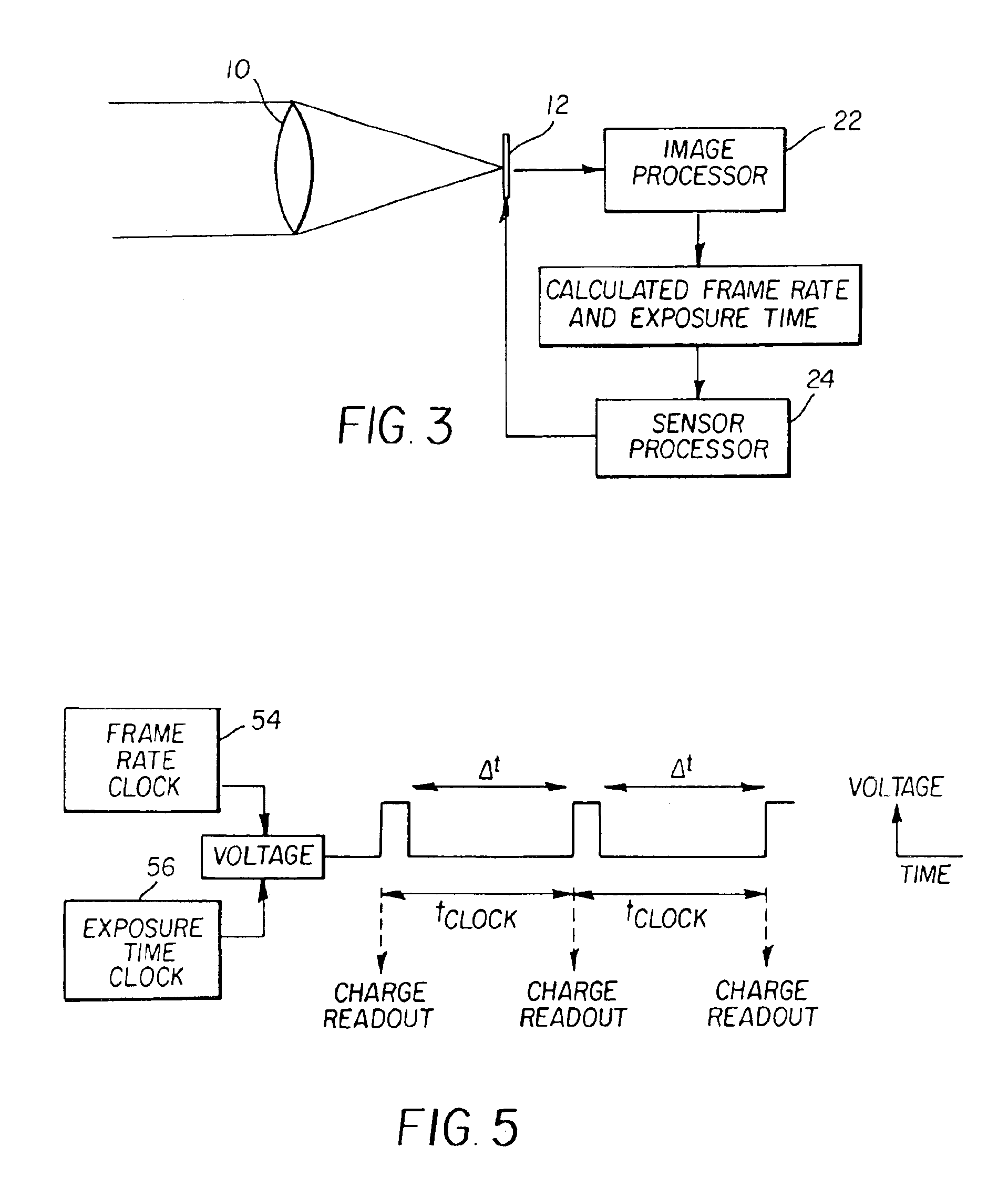Method and adaptively deriving exposure time and frame rate from image motion
a technology of image motion and exposure time, applied in the field of method and adaptive derivation of exposure time and frame rate from image motion, can solve the problems of inability to identify objects, loss of information that is generally not recoverable, and inability to accept smears of objects, etc., and achieve the effect of maximizing the signal-to-noise ratio (snr)
- Summary
- Abstract
- Description
- Claims
- Application Information
AI Technical Summary
Benefits of technology
Problems solved by technology
Method used
Image
Examples
Embodiment Construction
[0017]Because image processing systems are well known, the present description will be directed in particular to attributes forming part of, or cooperating more directly with, the method in accordance with the present invention. Attributes not specifically shown or described herein may be selected from those known in the art. In the following description, a preferred embodiment of the present invention would ordinarily be implemented as a software program, although those skilled in the art will readily recognize that the equivalent of such software may also be constructed in hardware. Given the method as described according to the invention in the following materials, software not specifically shown, suggested or described herein that is useful for implementation of the invention is conventional and within the ordinary skill in such arts.
[0018]If the invention is implemented as a computer program, the program may be stored in conventional computer readable storage medium, which may ...
PUM
 Login to View More
Login to View More Abstract
Description
Claims
Application Information
 Login to View More
Login to View More - R&D
- Intellectual Property
- Life Sciences
- Materials
- Tech Scout
- Unparalleled Data Quality
- Higher Quality Content
- 60% Fewer Hallucinations
Browse by: Latest US Patents, China's latest patents, Technical Efficacy Thesaurus, Application Domain, Technology Topic, Popular Technical Reports.
© 2025 PatSnap. All rights reserved.Legal|Privacy policy|Modern Slavery Act Transparency Statement|Sitemap|About US| Contact US: help@patsnap.com



